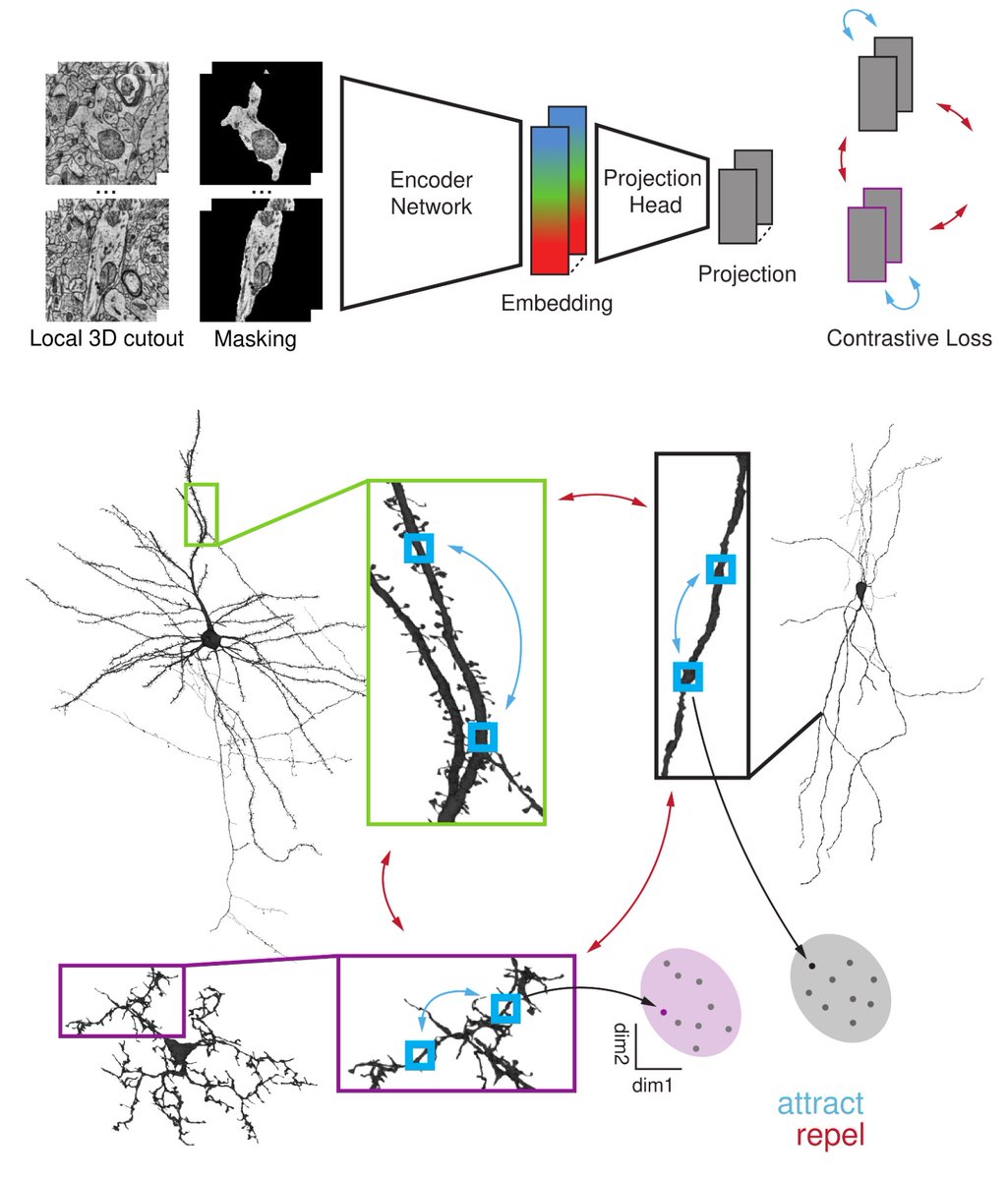
fcollman
@fcollman
Neuroscientist @AllenInstitute studying synaptic and artificial networks
ID: 15063795
09-06-2008 18:33:17
297 Tweet
449 Followers
212 Following

We highlight brain #vasculature in large-scale 3D electron microscopy studies. There is a gold mine of information waiting to be explored, with relevance to the BBB, blood flow, brain clearance, and metabolism. Amazing resources for the vascular community. biorxiv.org/content/10.110…

Our paper online today in Cell (authors.elsevier.com/c/1eeR~L7PXinZ5) combines EM neural circuit reconstruction, organelle reconstruction, and neural activity in mouse visual cortex released here microns-explorer.org/phase1. Princeton Neuroscience Institute @BCMHouston Allen Institute IARPA




The results of a fun connectomics project with Viren Jain, @[email protected] and collegues are finally out. Starting from an automated segmentation and EM, self-supervised learning can produce informative embeddings that make downstream tasks more attainable / possible.

I'm happy to share a somewhat unpredicted first manuscript out of my lab with you. Browsing the invaluable Allen Gannett Mouse Brain Connectivity Project's images we wondered, "Hey, anyone noticed these black dots in the red channel?"





Our analysis of the connections between excitatory L2/3 pyramidal cells in mouse V1 just came out in eLife! Amazing team work between Princeton Neuroscience Institute BCMHouston Allen Institute Previous tweet thread: x.com/tmacrina/statu… elifesciences.org/articles/76120

Excited to share beam deflection Transmission Electron Microscope (bdTEM), a fun and productive collaboration with Project Voxa. biorxiv.org/content/10.110… (1/5)



Happy holidays from the brain! This is an awesome remix of the original I made. I love seeing how open science and data also can lead to open art and inspiration. Thanks to the broader team from Allen Institute Sebastian Seung and Andreas Tolias Lab @ Stanford University to make things like this happen.



We posted our pre-print today describing how the Connectome Annotation Versioning Engine (CCAVE) supports analyzing and editing the worlds largest connectomics datasets biorxiv.org/cgi/content/sh…! Sven Dorkenwald @csdashm Allen Institute Sebastian Seung!






